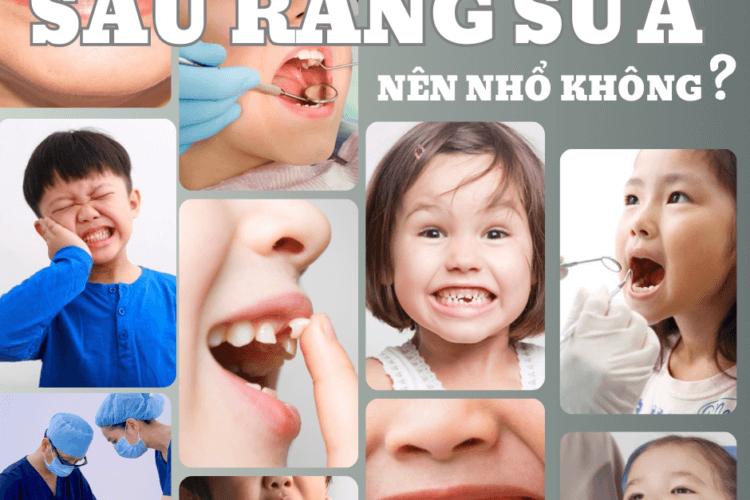Cavities in baby teeth are a common issue in young children. Tooth decay in baby teeth can cause pain, affecting the child’s eating, learning, and playing activities. It may require a significant amount of time and money for treatment. If not treated promptly, it can lead to infections causing swelling and pain, or the risk of retaining bacteria affecting the child’s health. So, should they be extracted, or how should they be handled for safety and effectiveness?
Causes of cavities in baby teeth in young children.
Cavities in baby teeth are a condition where the teeth are attacked by bacteria, leading to the formation of cavities that cause pain, destruction of tooth tissue, and impact on chewing and aesthetics. Cavities in children occur when:
- Eating too many sweets
- Inadequate and improper oral hygiene care
- Misaligned teeth
- Not brushing teeth, and regular dental check-ups with a dentist.
Should a child’s decayed baby tooth be pulled or not?
Even though baby teeth play a crucial role in a child’s development, prematurely pulling them can have negative consequences. If a baby tooth is pulled too early, the underlying permanent tooth germ may have difficulty erupting, leading to delayed or misaligned tooth growth. Losing a baby tooth can also impact the development of the jawbone.
Therefore, if it’s not necessary to extract the tooth, decayed baby teeth should be restored to preserve them for the child, allowing them to naturally fall out when ready. However, there are still cases where pulling a decayed tooth for a child may be necessary.
- Decayed baby tooth is loose
- Decayed baby tooth is severely decayed, causing pain
- Decayed baby tooth has severe pulpitis
- Decayed baby tooth is inflamed and infected.
What should you do when your child has tooth decay in baby teeth?
Mild Baby Tooth Decay
If it’s only enamel decay and the cavity is very small, filling the tooth may not be necessary. The child just needs regular daily care and hygiene.
If there’s dentin or pulp decay but can be preserved, the child will get a filling. Depending on the location and depth of the decay, the dentist will consider different filling options to ensure both functional and aesthetic aspects. Therefore, extracting the tooth is unnecessary in this case.
Severe Baby Tooth Decay
If the baby tooth is severely decayed, the child may have to extract the tooth early to avoid affecting the oral health. Sometimes, when the decayed tooth coincides with the time of natural tooth replacement, we can wait for the tooth to fall out naturally or assist in the extraction.
In summary, baby tooth decay is a common condition in our country. Whether or not to extract the tooth depends on the severity of the decay and the child’s age. We hope this article from Nha khoa Nụ Cười Duyên has helped address the question: “Baby tooth decay – Should it be extracted or how to handle it safely?” If you have any questions, please contact the Hotline: 0907.407.090.


